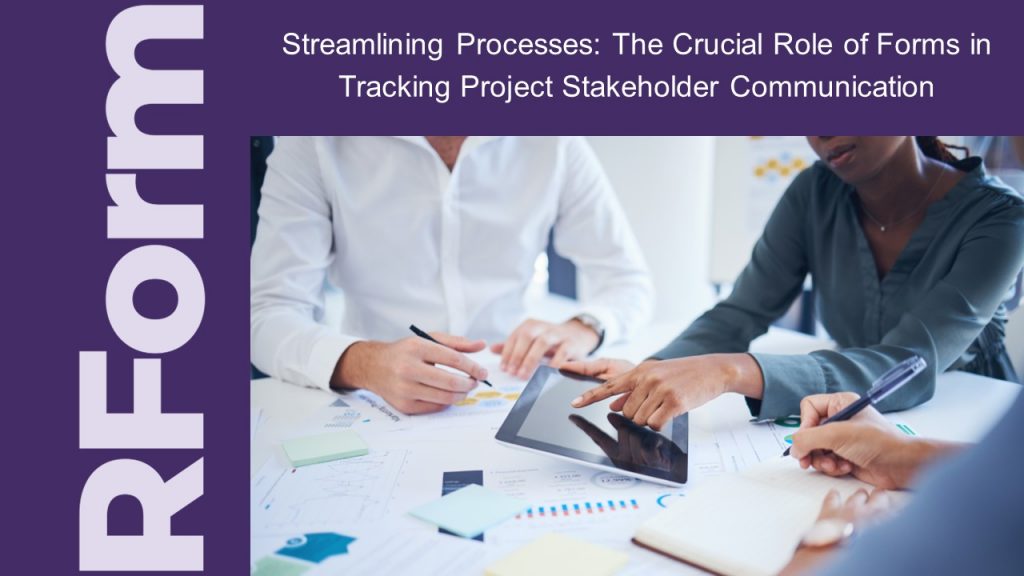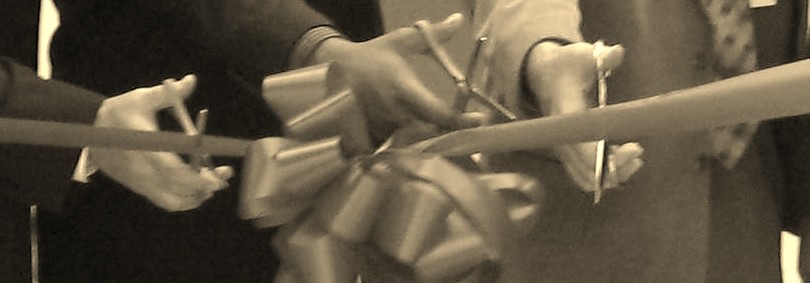Streamlining Processes: The Crucial Role of Forms in Tracking Project Stakeholder Communication

In project management, streamlining processes is crucial for achieving efficiency and reducing the risk of errors. By standardizing workflows, teams can allocate resources more effectively, meet deadlines, and enhance project delivery. Streamlined processes help identify bottlenecks promptly, allowing project managers to implement timely corrective actions. This approach minimizes the chances of project delays and enhances team collaboration and accountability.
Streamlined processes ensure that every team member is on the same page, reducing miscommunication and the duplication of efforts. Additionally, it helps in maintaining consistent quality standards throughout the project lifecycle. As a result, stakeholders, including clients and team members, experience a more seamless and productive project execution, ultimately leading to higher satisfaction and successful project outcomes.
Role of forms in tracking project stakeholder communication: Forms play a vital role in tracking project stakeholder communication by providing a structured method for recording and retrieving information. They are a reliable repository for documenting interactions, decisions, and stakeholder feedback. This documentation is crucial for maintaining a clear and transparent communication trail, making informed decisions, and minimizing misunderstandings. Using standardized forms, project managers can ensure that all relevant details are captured consistently, making it easier to reference and analyze stakeholder input. This facilitates proactive management of stakeholder expectations and fosters a collaborative environment.
Role of forms in tracking project stakeholder communication: Forms play a crucial role in tracking project stakeholder communication by offering a systematic approach to capturing and organizing information. They enable project managers to document interactions, feedback, and decisions, ensuring that all communication is recorded accurately and accessible when needed. Furthermore, using forms facilitates the monitoring of communication patterns, helping to identify any gaps or issues that may arise. This systematic documentation is invaluable for maintaining transparency and accountability throughout the project lifecycle.
Additionally, forms can be tailored to specific project requirements, allowing for the inclusion of relevant fields that capture critical details. This customization ensures that no important information is overlooked. By providing a structured repository of all stakeholder interactions, forms support better decision-making and foster a more collaborative environment, ultimately contributing to the project’s success. Organizations such as Architects and Contract Administrators significantly benefit from the organization and clarity that forms provide.
Understanding Project Stakeholder Communication
Identifying key stakeholders in a project: Identifying key stakeholders is an essential first step toward effective project management. Stakeholders are individuals or groups interested in the project’s outcome, ranging from direct contributors to those affected by the project’s results. This includes clients, team members, senior management, suppliers, and external entities such as regulatory bodies. Recognizing key stakeholders early in the project lifecycle allows project managers to tailor communication strategies to meet their unique needs and expectations. It is vital to categorize stakeholders based on their influence and interest levels, ensuring that high-priority individuals receive the attention they deserve. Tools like stakeholder analysis matrices are often utilized to map these relationships. By accurately identifying and understanding the roles and concerns of each stakeholder, project managers can foster better collaboration, mitigate risks, and enhance the project’s overall success.
Importance of communication with stakeholders: Effective communication is paramount in project management. Clear and consistent communication ensures that all parties are well-informed about project goals, progress, and potential issues. For instance, RForm could streamline communication, making tracking interactions and documenting feedback easier. Effective communication helps build trust and foster strong relationships with stakeholders, which is critical for team collaboration and project support. It also aids in managing stakeholder expectations, as transparent communication allows for the clarifications and adjustments needed throughout the project lifecycle.
Furthermore, it empowers stakeholders to make informed decisions, increasing their engagement and commitment to the project. Poor communication, on the other hand, can lead to misunderstandings, delays, and conflicts, jeopardizing project success. Hence, prioritizing effective stakeholder communication is essential for achieving desired outcomes and maintaining a harmonious project environment.
Types of Forms for Tracking Stakeholder Communication
Common forms used in project management: Various forms are commonly employed to streamline processes and ensure effective communication. Some of the most frequently used forms include stakeholder analysis forms, communication plans, and meeting minutes templates. Stakeholder analysis forms help identify and categorize stakeholders, detailing their interests, influence, and communication preferences.
Communication plans outline the methods, frequency, and channels for stakeholder interactions, serving as a roadmap for all project communications. Meeting minutes templates are invaluable for documenting discussions, decisions, and action items, clearly documenting what transpired during meetings. Other forms like risk management forms, project status reports, and change request forms are vital in maintaining organized and transparent documentation. Whether used by Contract Administrators or project managers, these forms provide a structured approach to managing projects, ensuring that all critical information is captured and easily accessible.
Design and customization options for tracking forms: Design and customization options for tracking forms are essential for meeting the unique needs of different projects and stakeholders. Generic templates can serve as a starting point, but customizing forms ensures that all relevant information is captured and organized efficiently. Project managers can tailor forms to include specific fields pertinent to their project’s context, such as deadlines, responsible parties, and priority levels.
Tools like RForm allow users to design forms that align with the organization’s branding and specific requirements, enhancing usability and consistency. Furthermore, incorporating drop-down menus, checkboxes, and automated fields can streamline the data entry process, reducing the likelihood of errors. Customization also extends to the way forms are distributed and accessed, with options for digital platforms facilitating real-time updates and easier sharing among team members. These design and customization capabilities make tracking forms more versatile and effective, ultimately supporting more efficient project management.
Utilizing Forms to Streamline Communication Processes
Implementing forms for efficient stakeholder communication: Implementing forms for efficient stakeholder communication involves a strategic approach to ensure that all interactions are well-documented and accessible. The first step is to identify the project’s and stakeholders’ key communication needs. Once these needs are understood, project managers can select or design appropriate forms to capture necessary information. Digital forms, such as those created with tools like RForm, can significantly enhance efficiency by allowing real-time updates and easy dissemination among stakeholders. Training team members on correctly using these forms is crucial to maintaining consistency and accuracy in data entry.
Additionally, establishing protocols for regular updates and reviews ensures that the information remains current and relevant. Integrating forms into the daily workflow allows project managers to streamline communication processes, reduce misunderstandings, and improve overall project coordination. This approach benefits not only Architects but also Contract Administrators and other project stakeholders by fostering clear and efficient communication.
Automation tools for managing and tracking forms digitally: Automation tools for managing and digitally tracking forms have revolutionized how project managers handle stakeholder communication. Tools like RForm provide user-friendly interfaces and robust functionality to effortlessly create, distribute, and track forms. These digital solutions enable real-time data entry and automatic updates, reducing the administrative burden of manual form management.
Features such as automated reminders, notifications, and approval workflows ensure that key stakeholders are informed and deadlines are met promptly. Integration with other project management software allows seamless data synchronization, enhancing overall project visibility and collaboration. Additionally, digital platforms offer advanced analytics and reporting capabilities, helping project managers identify trends, monitor progress, and make data-driven decisions. By leveraging automation tools, project managers can enhance efficiency, accuracy, and responsiveness in their communication processes, ultimately leading to more successful project outcomes. This modern approach benefits both project teams and Architects and Contract Administrators by streamlining their administrative tasks.
Benefits of Using Forms in Project Management
Improved organization and documentation of stakeholder interactions: Using forms in project management significantly improves the organization and documentation of stakeholder interactions. Structured forms provide a consistent framework for capturing essential information, ensuring no crucial details are overlooked. This systematic approach allows project managers to maintain comprehensive records of all communications, decisions, and feedback throughout the project lifecycle.
Digital solutions like RForm enhance this process by offering centralized repositories where all interaction logs can be stored, accessed, and referenced easily. Improved documentation facilitates better tracking of engagement history, enabling project managers to retrieve past communications quickly. This heightened level of organization aids in identifying patterns, addressing any emerging issues promptly, and ensuring that stakeholder expectations are managed effectively.
Ultimately, well-documented stakeholder interactions contribute to a clearer understanding of project developments, support more informed decision-making, and foster trust and transparency among all parties involved, benefiting Architects, Contract Administrators, and other stakeholders.
Enhanced decision-making and project outcomes through effective communication: Effective communication is pivotal in enhancing decision-making and improving project outcomes. When stakeholder interactions are systematically documented using forms, project managers gain access to organized and reliable data that supports more informed decisions. Consistent and transparent communication ensures that all relevant parties are kept up-to-date, minimizing the risk of misunderstandings and errors.
By leveraging tools like RForm, project managers can create a seamless flow of information, facilitating timely discussions and quicker resolutions of issues. This structured approach to communication enables better alignment of goals, clearer articulation of requirements, and more accurate tracking of progress. Consequently, stakeholders, including Architects and Contract Administrators, can proactively adjust strategies and plans, thereby optimizing project performance. Effective communication fosters a collaborative environment, where feedback is valued and actioned upon promptly, ultimately leading to successful project completions and higher satisfaction levels among all involved.
Conclusion
Recap of the importance of forms in tracking project stakeholder communication: Forms play an indispensable role in tracking project stakeholder communication by providing a structured and consistent method for capturing and organizing critical information. They enable project managers to accurately document interactions, feedback, and decisions, which are essential for maintaining transparency and accountability. By ensuring that all relevant details are recorded systematically, forms facilitate better tracking of communication patterns and stakeholder expectations.
Tools like RForm offer digital solutions that enhance efficiency through real-time updates and easy access. The improved organization resulting from forms allows for quick information retrieval, aiding in proactive issue resolution and better decision-making.
Effective use of forms contributes to more streamlined communication processes, reducing the risk of misunderstandings and delays. The systematic tracking of stakeholder communication using forms significantly enhances project coordination, collaboration, and outcomes, proving beneficial for diverse stakeholders, including Architects, Contract Administrators, and project teams.
Recommendations for integrating forms into project management processes: Integrating forms into project management processes requires strategic planning and execution. Firstly, project managers should conduct a needs assessment to determine which forms best support their workflow and stakeholder communication. Selecting or customizing forms tailored to the project’s specific requirements, such as RForm for real-time updates, can be highly effective.
Implementing digital solutions allowing seamless integration with other project management tools ensures that data is synchronized and easily accessible. Training team members on properly using these forms ensure consistency and accuracy in documentation. Establishing protocols for regular form updates and reviews guarantees that the captured information remains current and relevant. Creating a centralized repository for all forms aids in better organization and quick data retrieval when needed. Finally, encouraging a culture of transparency and accountability when filling out and maintaining forms fosters better stakeholder engagement and collaboration, ultimately leading to successful project outcomes.

